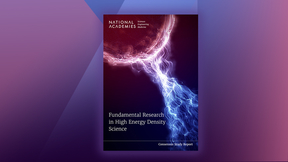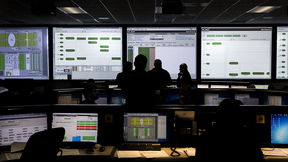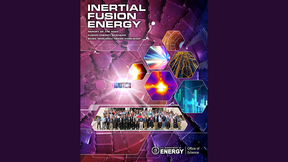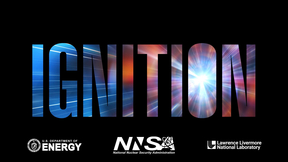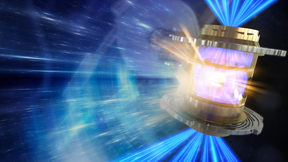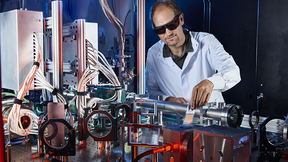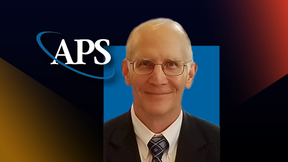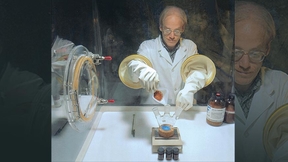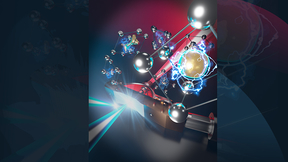Back
Lasers and Optical S&T
Computing codes, simulations helped make ignition possible
Part 6 in a series of articles describing the elements of Lawrence Livermore National Laboratory's fusion breakthrough. For Lawrence Livermore National Laboratory (LLNL) physicist George Zimmerman, and for the hundreds of physicists, computer scientists and code developers who have worked on fusion for decades, computer simulations have been inexorably tied to the quest…
Alison Christopherson, Art Pak elected NAS Kavli fellows
Lawrence Livermore National Laboratory (LLNL) staff scientists Alison Christopherson and Art Pak have been elected Kavli fellows of the U.S. National Academy of Sciences (NAS). As new Kavli fellows, they participated in NAS’ annual Kavli Frontiers of Science U.S. symposium, which brings together outstanding young scientists to discuss exciting advances and opportunities in…
NIF’s optics meet the demands of increased laser energy
Part 5 in a series of articles describing the elements of Lawrence Livermore National Laboratory's fusion breakthrough. If Lawrence Livermore National Laboratory (LLNL)’s National Ignition Facility (NIF) were a race car, it would run at the redline most of the time. “NIF is the only laser system that intentionally operates above the laser damage growth threshold,” said…
Laser focused: Power and finesse drove fusion ignition success
Fourth in a series of articles describing the elements of Lawrence Livermore National Laboratory's fusion breakthrough. To achieve fusion ignition on Dec. 5, 2022, the National Ignition Facility (NIF)’s laser system needed to operate flawlessly at both ends of the performance spectrum, delivering immense energies while controlling the energy balance across all 192 laser…
National Academies release report on high energy density science with LLNL contributions
The National Academies of Sciences, Engineering, and Medicine released a report, Fundamental Research in High Energy Density Science, which identifies key challenges and science questions for the field of High Energy Density (HED) science for the coming decade and proposes ways to address them. The report follows a year-and-a-half-long consensus study by a committee of 13…
Computational Engineering is key to ignition success
In a room illuminated by blinking lights and glowing monitors, more than 2,000 synchronized computers are triggered to run 5 million lines of code. The intricate code language is responsible for aligning and firing 192 laser beams — and carrying some 800 channels of target diagnostic data — efficiently and reliably several times a day. This isn’t a scene from a science…
Designing for Ignition: Precise changes yield historic results
Second in a series of articles describing the elements of Lawrence Livermore National Laboratory's fusion breakthrough. The National Ignition Facility (NIF) is the world’s biggest laser — three footballs fields could fit inside — but it’s what happened inside a capsule the size of a peppercorn that made scientific history on Dec. 5, 2022. The NIF experiment that produced…
Star Power: Blazing the path to fusion ignition
First in a series of articles describing the elements of Lawrence Livermore National Laboratory's fusion breakthrough. It was the middle of the night on Dec. 5, 2022, and anticipation was building among the handful of researchers and technicians in the National Ignition Facility (NIF) control room. A set of pre-shot simulations had predicted a slightly better than 50-50…
NIF’s advances make Summer Scholar Program a coveted internship
Lawrence Livermore National Laboratory’s (LLNL) National Ignition Facility’s (NIF) recent scientific advances, including the achievement of fusion ignition in December, have increased interest among aspiring young scientists for the NIF&PS Summer Scholar Program. “That’s kind of the cool thing about this past year,” said Patrick Poole, the program director. “We had so…
Ignition gives U.S. ‘unique opportunity’ to lead world’s IFE research
Lawrence Livermore National Laboratory (LLNL)’s historic achievement of fusion ignition Dec. 5 at the National Ignition Facility (NIF) positions the United States with a “unique opportunity” to further lead the world scientific community’s pursuit of developing fusion as a future source of clean energy, according to a newly released report. Capitalizing on that opportunity…
Lawrence Livermore National Laboratory achieves fusion ignition
The U.S. Department of Energy (DOE) and DOE’s National Nuclear Security Administration (NNSA) today (Dec. 13) announced the achievement of fusion ignition at Lawrence Livermore National Laboratory (LLNL) — a major scientific breakthrough decades in the making that will pave the way for advancements in national defense and the future of clean power. On Dec. 5, a team at…
A shot for the ages: Fusion ignition breakthrough hailed as ‘one of the most impressive scientific feats of the 21st century’
Call it the shot heard ‘round the world. The monumental, first-ever demonstration of fusion ignition by Lawrence Livermore National Laboratory’s (LLNL) National Ignition Facility (NIF) marks a potentially world-changing breakthrough for fusion energy and a key initial step in a decades-long quest for limitless clean energy, U.S. government officials and LLNL scientists…
LLNL researchers observe that ions behave differently in fusion reactions
Researchers at Lawrence Livermore National Laboratory (LLNL) have discovered that ions behave differently in fusion reactions than previously expected, thus providing important insights for the future design of a laser–fusion energy source. The findings are featured in a new paper in the Nov. 14 issue of Nature Physics and is titled “Evidence for suprathermal ion…
'Twisted' laser light experiments offer new insights into plasma physics
Electromagnetic vortices occur naturally throughout the universe and have recently been observed in association with black holes. Over the last decade, scientists have sought methods to investigate how extremely strong electromagnetic vortices interact with matter, specifically plasma, in a laboratory setting. Plasma, known as the “fourth state of matter,” makes up nearly…
Remington honored with American Physical Society award
Bruce Remington, a distinguished member of the technical staff at Lawrence Livermore National Laboratory (LLNL), has been honored with the American Physical Society’s (APS) 2023 George E. Duvall Shock Compression Science Award, which recognizes contributions to understanding condensed matter and non-linear physics through shock compression. Since 1987, the award — the…
Developing technology to keep the nuclear stockpile safe, secure and reliable
The last nuclear test, code-named Divider, took place 30 years ago, on Sept. 23, 1992. That year, President Bush declared a temporary moratorium on nuclear testing, which became permanent in 1995, during the Clinton administration. This ending of the era of nuclear testing coincided with a Presidential announcement of the beginning of stockpile stewardship. As the decision…
Under pressure: solid matter takes on new behavior
Investigating how solid matter behaves at enormous pressures, such as those found in the deep interiors of giant planets, is a great experimental challenge. To help address that challenge, Lawrence Livermore National Laboratory (LLNL) researchers and collaborators took a deep dive in understanding these extreme pressures. The work was just published in Nature Physics with…
LLNL’s new diffraction gratings will enable the world’s most powerful laser
Lawrence Livermore National Laboratory (LLNL) researchers and their collaborators have developed new high-energy pulse compression gratings that will be used in the world’s highest-power laser system, designed to deliver up to 10 petawatts (quadrillion watts) of peak power. A petawatt is about 1,000 times the capacity of the entire U.S. electric grid. The high-energy, low…
Lab scientist wins outstanding doctoral thesis award from American Physical Society
Lawrence Livermore National Laboratory (LLNL) scientist Alison Ruth Christopherson has earned the American Physical Society’s (APS) Marshall N. Rosenbluth Outstanding Doctoral Thesis award. The award recognizes exceptional early-career scientists who have performed original thesis work of outstanding scientific quality and achievement in the area of plasma physics…
Burning Plasma Team receives honor from American Physical Society
The Burning Plasma Team has been awarded the 2022 John Dawson Award for Excellence in Plasma Physics Research by the American Physical Society. The team consists of members from Lawrence Livermore National Laboratory (LLNL) and from other institutions. The team was cited “for the first laboratory demonstration of a burning deuterium-tritium plasma where alpha heating…






